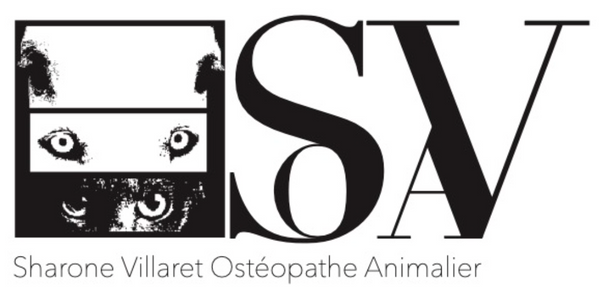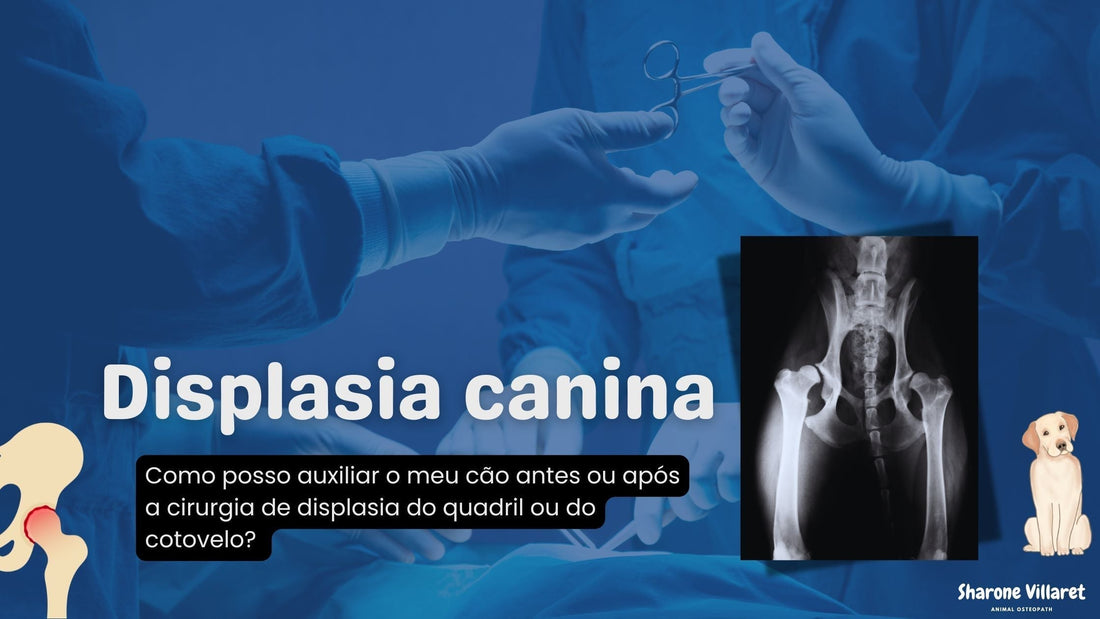Dysplasia is a common joint condition in dogs that can cause pain, lameness, and loss of mobility. It primarily affects the elbow and hip and may require specific treatment, with or without surgery.
In this article, we will detail:
✅ Elbow and Hip Dysplasia : Causes and Symptoms
✅ Should you operate? Surgical and alternative solutions
✅ The role of canine osteopathy before and after an intervention

1. Elbow Dysplasia in Dogs
What is elbow dysplasia?
Elbow dysplasia is a joint malformation that often affects large breeds (Labrador, German Shepherd, Golden Retriever). It results in poor congruity between the forearm bones and the humerus, leading to early osteoarthritis.
Should I operate?
Surgery is recommended in severe cases, particularly for:
🔹 Remove a bone fragment causing pain
🔹 Realign the joint with a corrective osteotomy
🔹 Reducing osteoarthritis with a prosthesis (extreme cases)
2. Hip Dysplasia in Dogs
What is hip dysplasia?
This condition is characterized by poor formation of the hip joint, resulting in the head of the femur not fitting properly into the pelvis. It mainly affects large dogs such as Rottweilers and Saint Bernards.
Should I operate?
The operation is considered when:
🔹 The pain is persistent despite treatments
🔹 Mobility is severely reduced
🔹 Severe osteoarthritis is present
Possible interventions:
✔ Pelvic osteotomy (for young dogs)
✔ Hip prosthesis (advanced cases)
✔ Excision of the femoral head (small dog)
3. Osteopathy to Support Dogs with Dysplasia
Protocol without operation
If surgery is not necessary, osteopathy helps to:
✔ Reduce pain and improve mobility
✔ Reduce muscle compensations and prevent osteoarthritis
✔ Improve posture and limit tension
Osteopathic protocol:
🔹 Regular sessions to relieve joint pain
🔹 Work on muscles and fascia to limit tension
🔹 Gentle exercise tips to strengthen your supports
Protocol with operation
Before surgery, osteopathy prepares the animal:
✔ Muscle relaxation for better post-operative recovery
✔ Reduction of compensatory tensions before the intervention
After surgery, osteopathy promotes:
✔ Faster and more comfortable recovery
✔ Progressive rehabilitation of the operated joint
✔ Improved blood and lymphatic circulation
Post-operative protocol:
🔹 Spaced sessions to support healing
🔹 Gentle tissue work to release tension
🔹 Follow-up until complete recovery
4. Why Have a Dysplastic Dog Followed by an Osteopath?
Osteopathy is an essential ally in the management of joint pathologies such as dysplasia. In addition to veterinary monitoring, it:
✅ Improves the dog's comfort of life.
✅ Delays the progression of osteoarthritis.
✅ Optimizes recovery after surgery.
✅ Reduces chronic pain.
💡 Whether your dog has undergone surgery or not, regular osteopathic follow-up will provide him with better well-being and greater mobility throughout his life! 🐶💙
Click here to book an appointment for your dog in Portugal!



